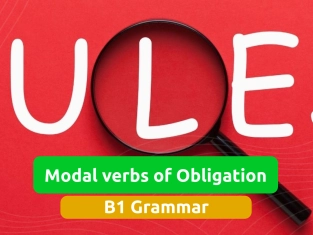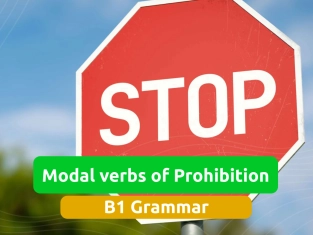by PushtoLearn
Modal verbs of Necessity
Table of Contents
Modal verbs of Necessity Exercises
These exercises focus on Modal verbs of Necessity
The Three Main Modal Verbs of Necessity
1. Must
Must is used to express strong obligations or rules.
Examples:
-
You must wear a seatbelt in the car. (It’s the law.)
-
I must finish my homework tonight. (It’s very important.)
Rules for Using “Must”:
-
Subject + must + base verb
-
Example: She must bring her ID.
2. Have to
Have to is used to show necessity, often based on external rules or situations. It’s more common in everyday English than must.
Examples:
-
I have to wake up early for work.
-
You have to turn off your phone during the movie.
Rules for Using “Have to”:
-
Subject + have to + base verb (in present tense)
-
Example: We have to leave now.
-
Subject + had to + base verb (in past tense)
-
Example: They had to cancel the meeting.
3. Need to
Need to expresses a requirement or something important to do. It’s softer than must or have to.
Examples:
-
You need to drink more water.
-
I need to call my parents today.
Rules for Using “Need to”:
-
Subject + need to + base verb
-
Example: She needs to improve her English skills.

Key Differences Table: Modal Verbs of Necessity
|
Modal Verb |
Use |
Strength of Necessity |
Examples |
Negative Form |
|
Must |
Expresses strong obligation or rules |
Strong |
- You must wear a helmet. |
Must not (mustn’t): You mustn’t smoke here. |
|
Have to |
Shows necessity based on external rules |
Strong but less personal |
- I have to pay my bills on time. |
Don’t have to: You don’t have to come. |
|
Need to |
Expresses a requirement or importance |
Moderate |
- You need to drink more water. |
Don’t need to: You don’t need to bring anything. |
Key Points:
-
Must often reflects personal or legal obligations.
-
Have to is commonly used for everyday rules and obligations.
-
Need to is softer and often used to suggest something important but not urgent.
To learn more about Modal Verbs including Past Modal Verbs, have a look at these lessons: Modal verbs of Prohibition, Modal Verbs of Deduction, Modal verbs of Permission, Modal verbs of Obligation.
Common Errors and How to Fix Them
|
Error |
Correction |
Explanation |
|
You must to finish your work. |
You must finish your work. |
Must is followed by the base verb, not “to.” |
|
He don’t have to go to school. |
He doesn’t have to go to school. |
Use correct subject-verb agreement. |
|
She need to brings her book. |
She needs to bring her book. |
Use singular verb form with she/he/it. |
Everyday Use of Modal Verbs of Necessity
Here are some situations where modal verbs of necessity are commonly used:
At school:
-
Students must do their homework.
-
You need to bring your notebook.
At work:
-
Employees have to attend meetings.
-
You must follow the company’s safety rules.
In daily life:
-
I need to go grocery shopping.
-
You have to pay your bills on time.
FAQ
What’s the difference between “must” and “have to”?
Both mean something is necessary, but must is often used for personal obligations, while have to is used for external rules.
Can “need to” be used in the negative form?
Yes, for example: "You don’t need to bring anything."
Is “must” used in the past tense?
No, we use had to instead. Example: "I had to study last night."
What’s the negative form of “must”?
The negative form is must not (mustn’t). Example: "You mustn’t smoke here."
Which modal verb is more polite, “must” or “need to”?
Need to is more polite and less forceful than must.

